(Waste land) CHAPTER 2: TrashscapeJakarta, Indonesia 2017-2018 According to the principles of the circular economy, landfills are the “new” mining sites, since they contain huge quantity of materials that can be used again as raw materials. Thus, trash pickers become the “new” miners. Among the many changes we are living in our time, we see the growing of “trashscapes”: mountains you can climb, plateau where you can set a tent, canyons you can walk, with villages living in and around them. So far, trash pickers have been presented as poor people coming to a landfill to collect litter. This photo series is part of the story on Mak Muji, the landfill midwife of Bantar Gebang, probably one of the largest dumpsites in the world. Her life shows a change: people live in and around the landfill, in what look as stable settlements, not temporary slums, thus showing us a tremendous example of resilience to this man-made environment. Indonesia, is ranked the second largest plastic polluter in the world behind only China with reports showing that the country produces 187.2 million tonnes of plastic waste each year of which more than 1 million tons leaks into the ocean. Recent studies discovered that as plastics decay, they emit traces of methane and ethylene, two powerful greenhouse gases, and the rate of emission increases with time. The emissions occur when plastic materials are exposed to ambient solar radiation, whether in water or in the air, but in air, emission rates are much higher. Results show that plastics represent a heretofore unrecognized source of climate-relevant trace gases that are expected to increase as more plastic is produced and accumulated in the environment. Polyethylene, used in shopping bags, is the most produced and discarded synthetic polymer globally and was found to be the most prolific emitter of methane and ethylene. It’s estimated that over 8 billion tons of virgin plastic have been produced since 1950, making plastic one of the largest man-made materials on the planet, behind steel and cement. Of that volume, more than half was produced in the last 16 years, amid a global boom in single-use, disposable plastic. Current annual production levels are expected to double in the next 20 years. The photo of Mak Muji on top of Bantar Gebang waste heap has been awarded the overall prize Earth Photo 2019 by the Royal Geographical Society in London, June 2019. |
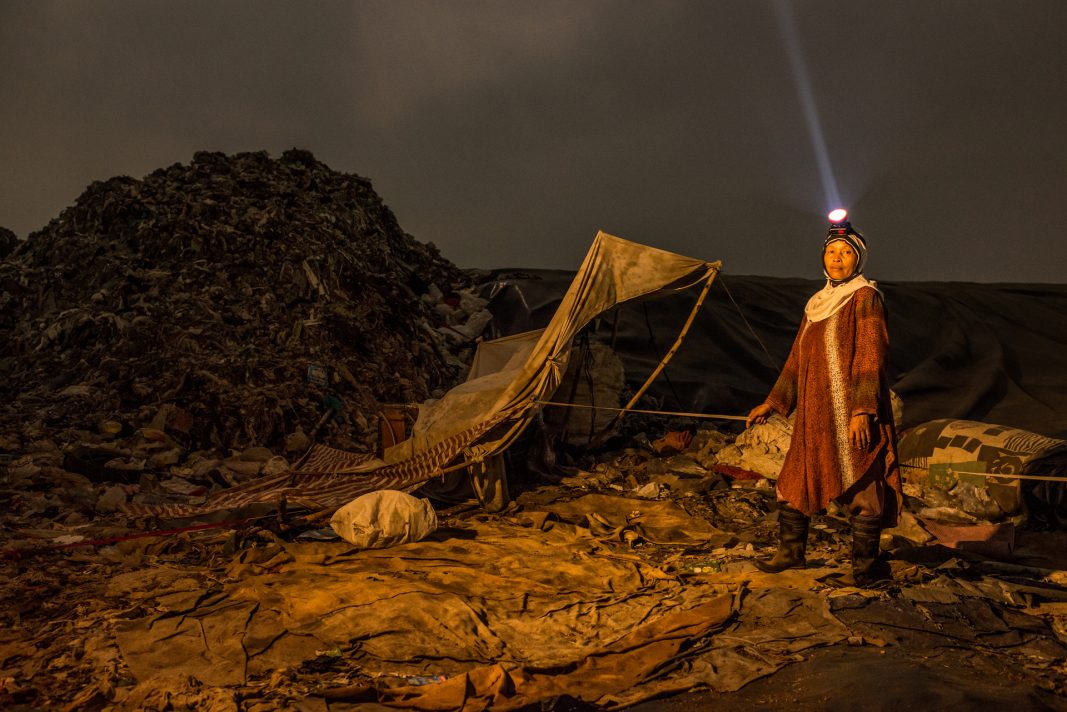
|
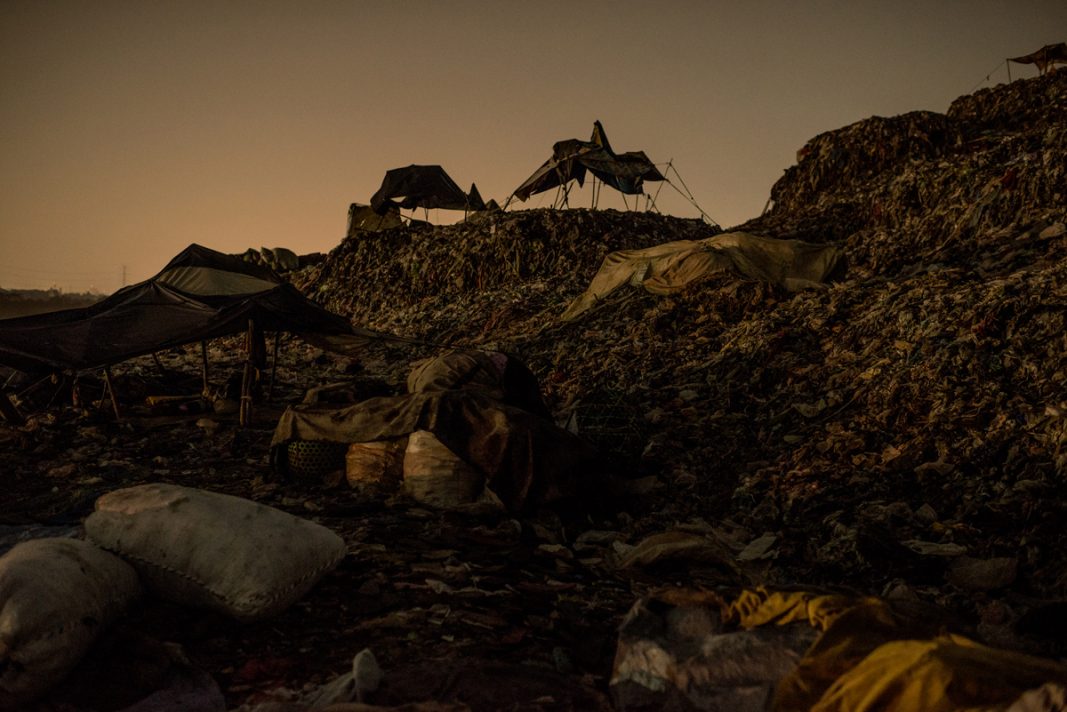
On the top of the highest heap waste in Bantar Gebang landfill, Mak Muji's tent (on the left) stands together with other trash pickers' tents on the smelling floor, at night. The tents are the places where trash pickers pile up bags full plastics and other items they pick up while scavenging among garbage, before taking them down in order to sort them and sell segregated materials.
The eerie reddish light comes from machines and scavangers' head lights working all night long in a different area of the dumpsite. Bekasi, Indonesia, 10th May 2018
|
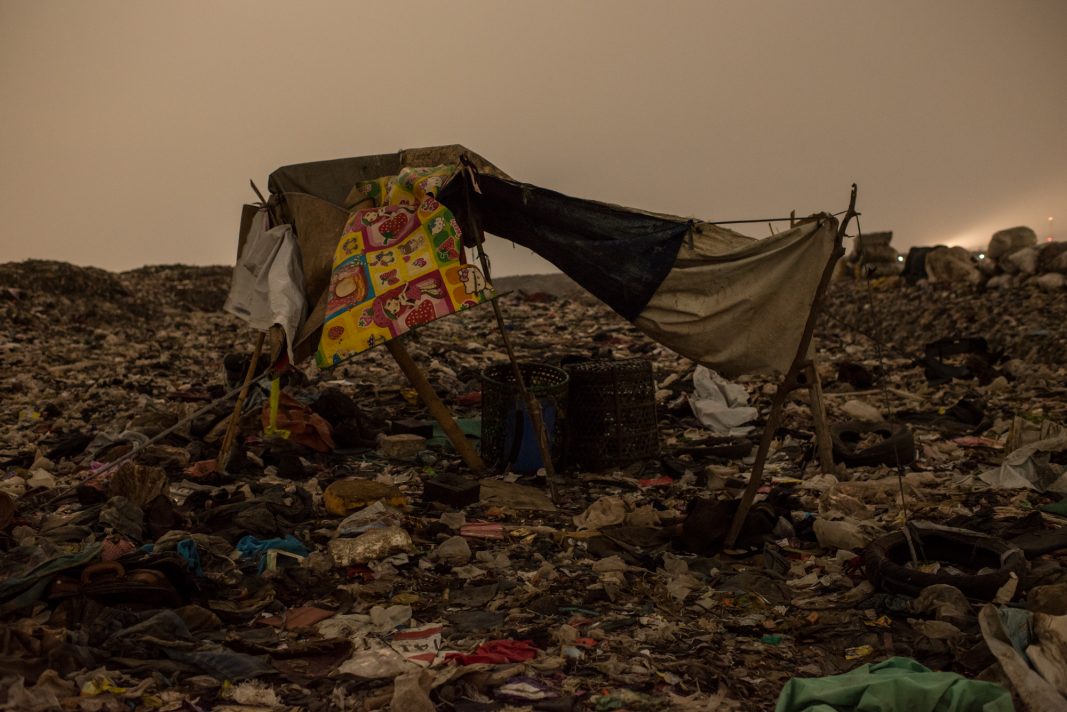
|
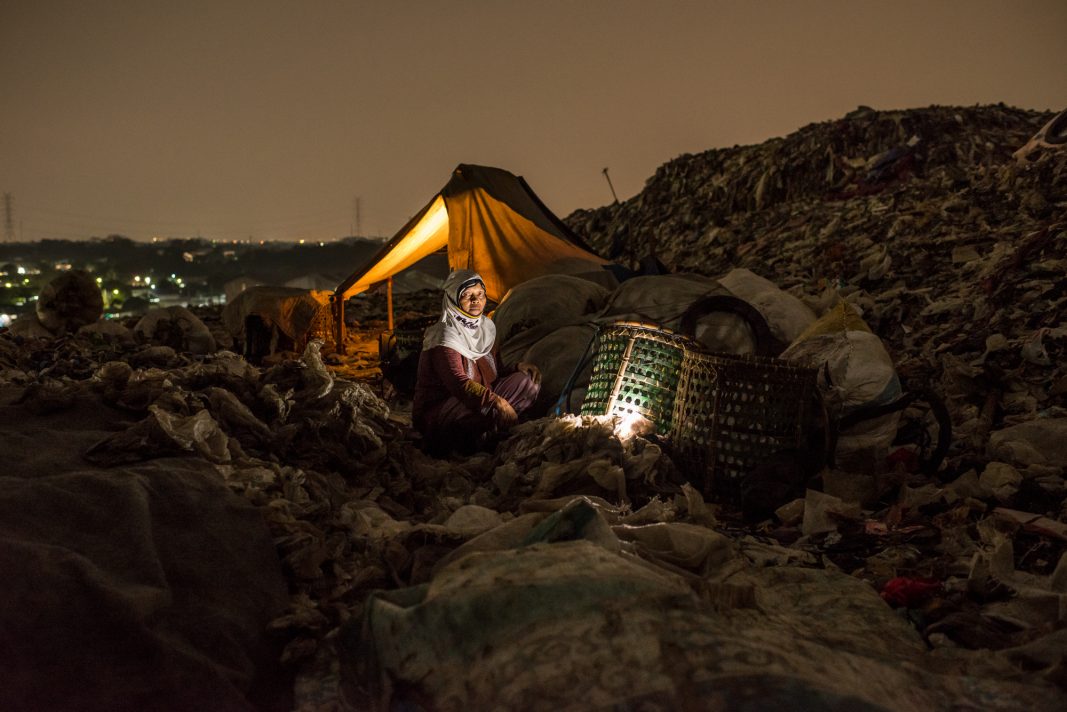
|
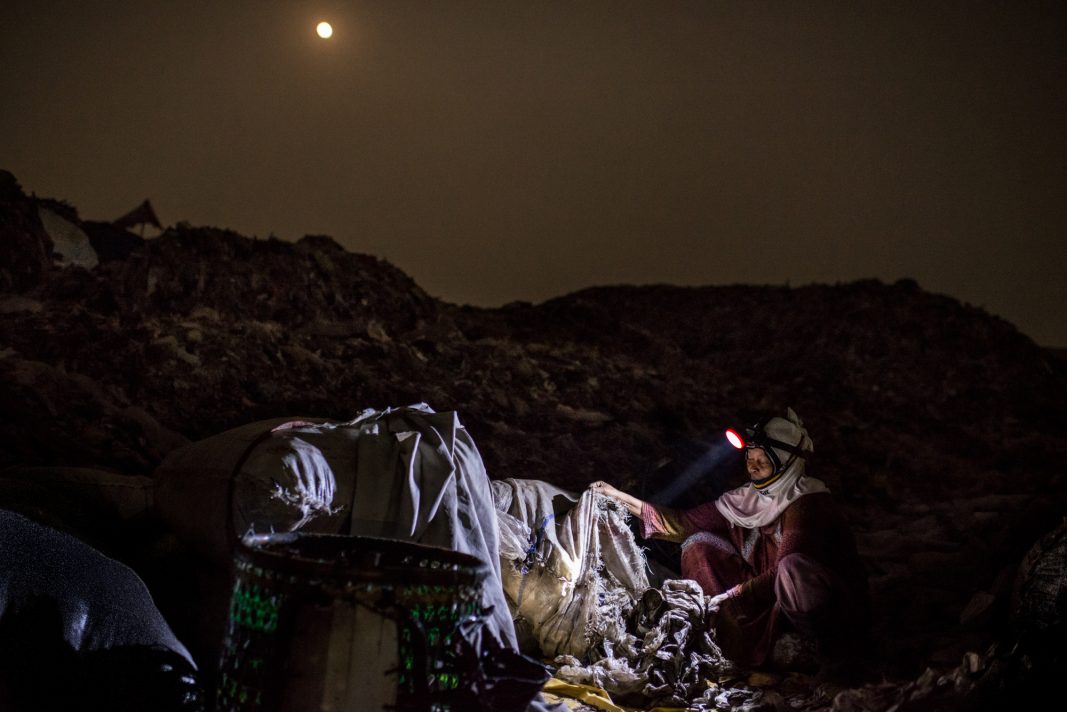
|
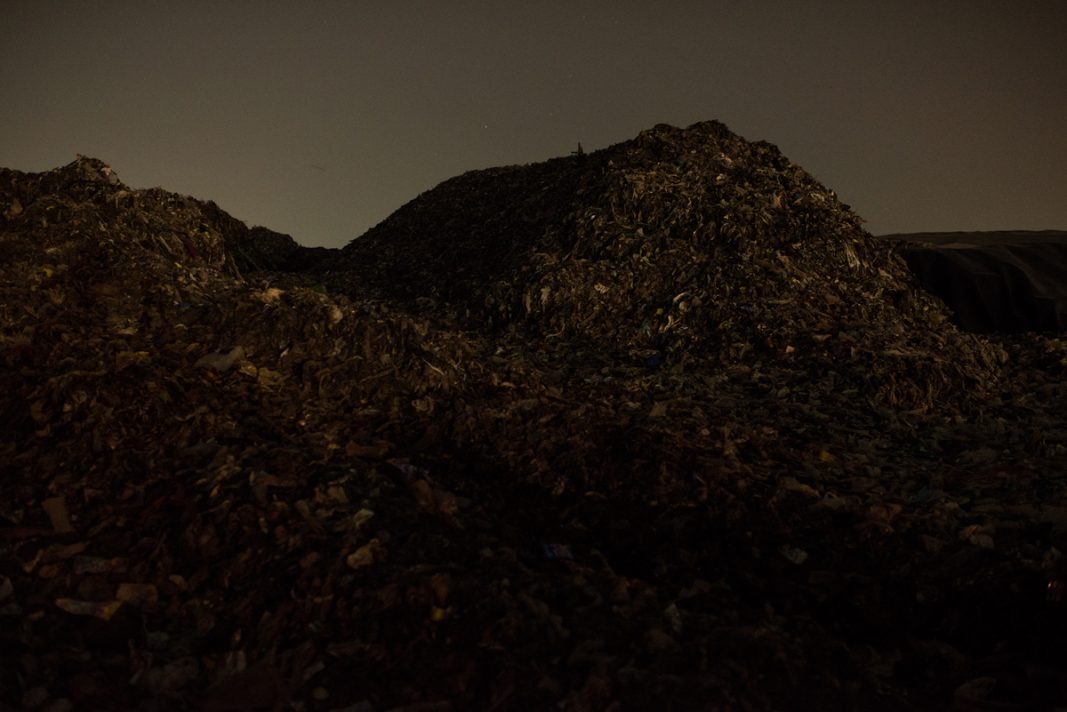
|
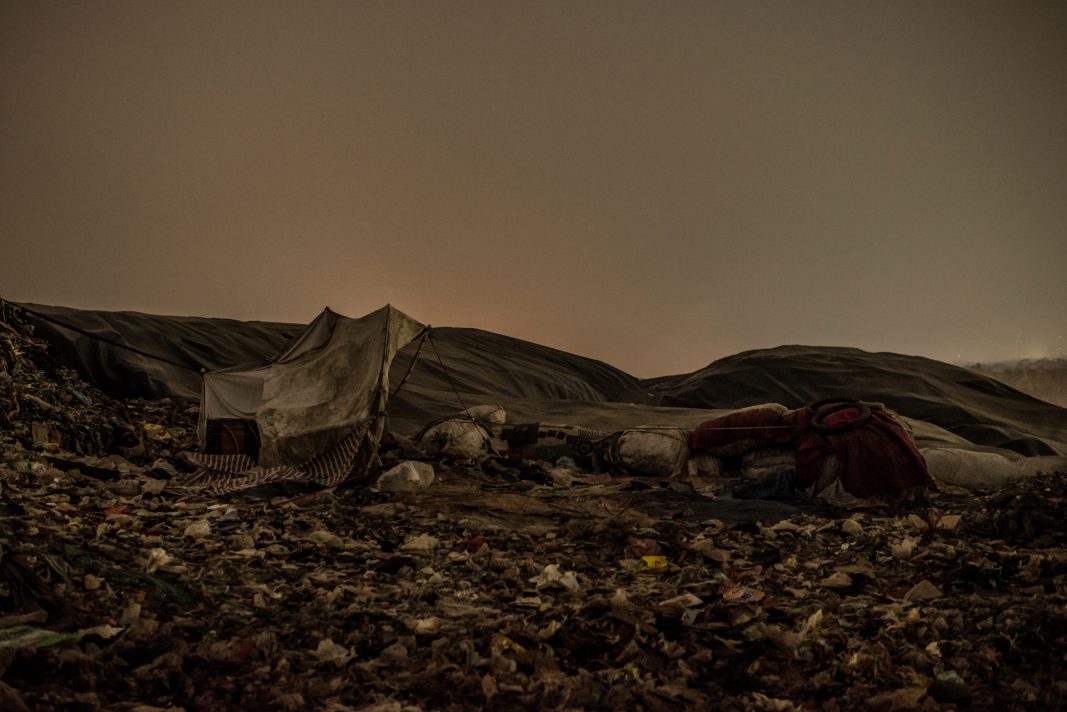
|
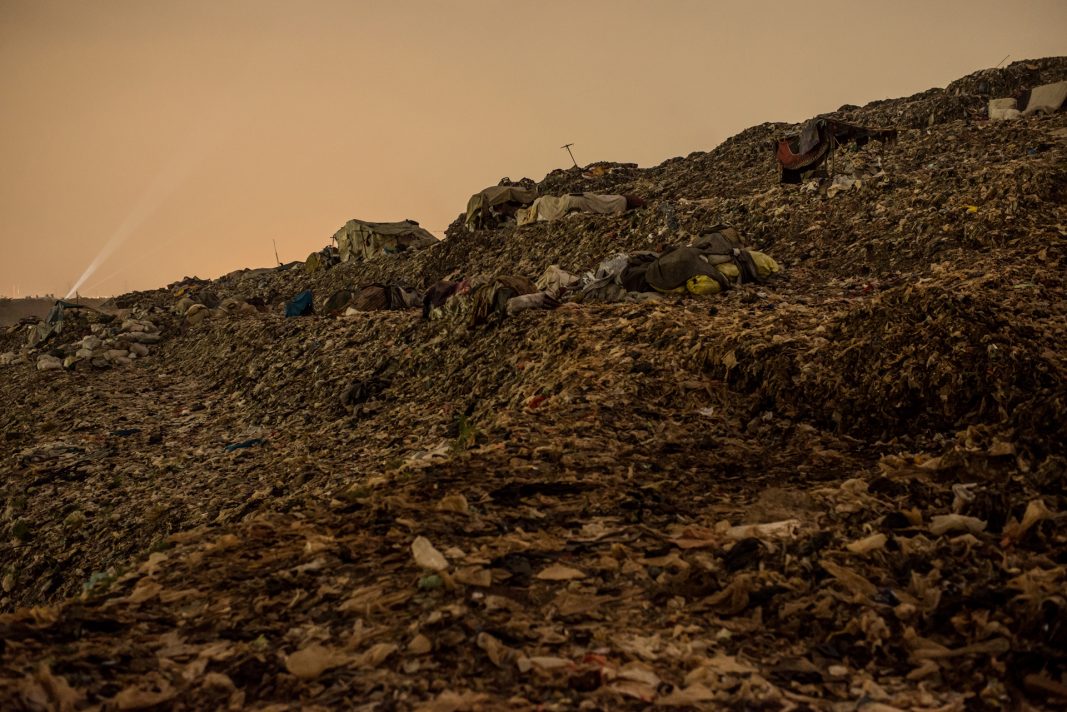
|
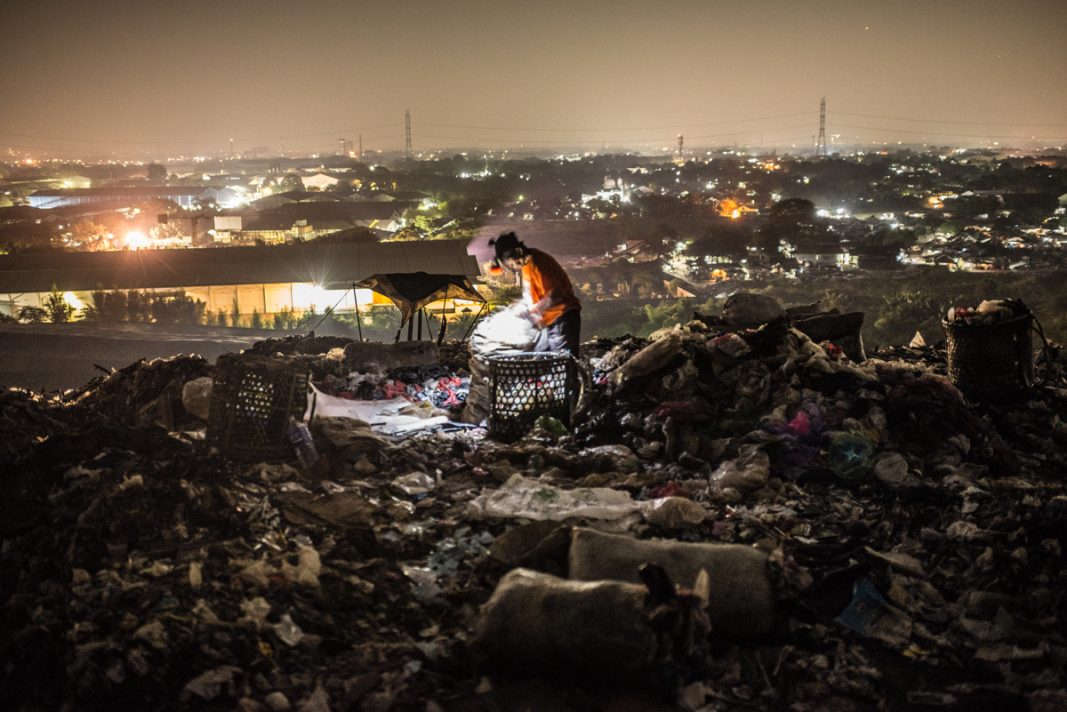
|
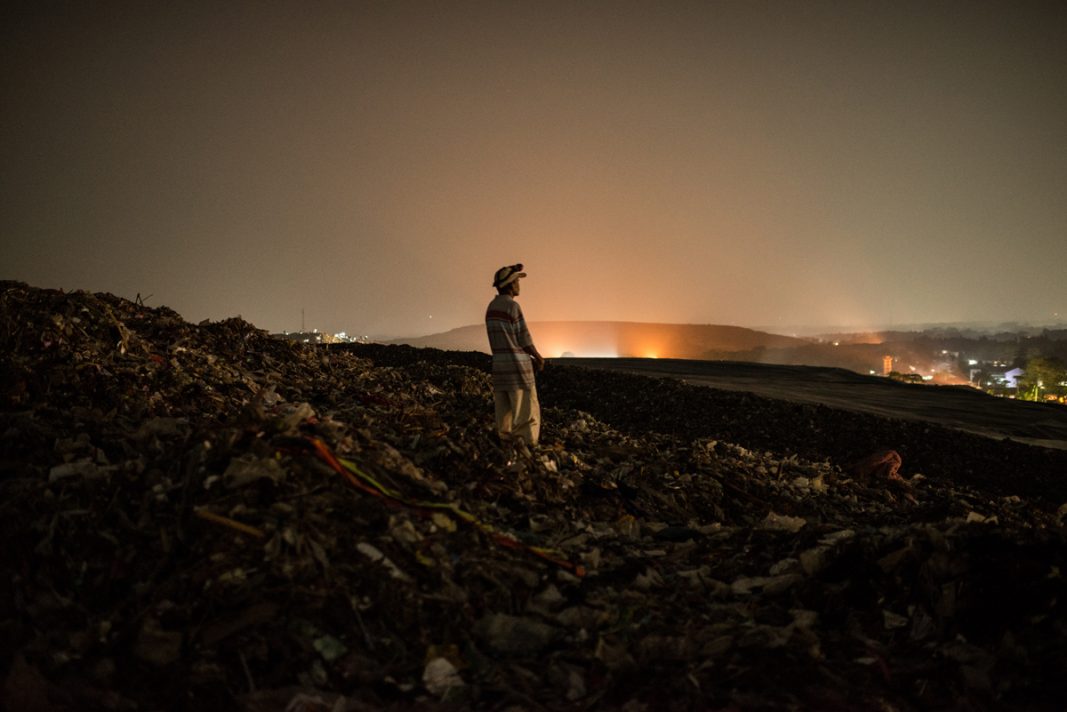
|
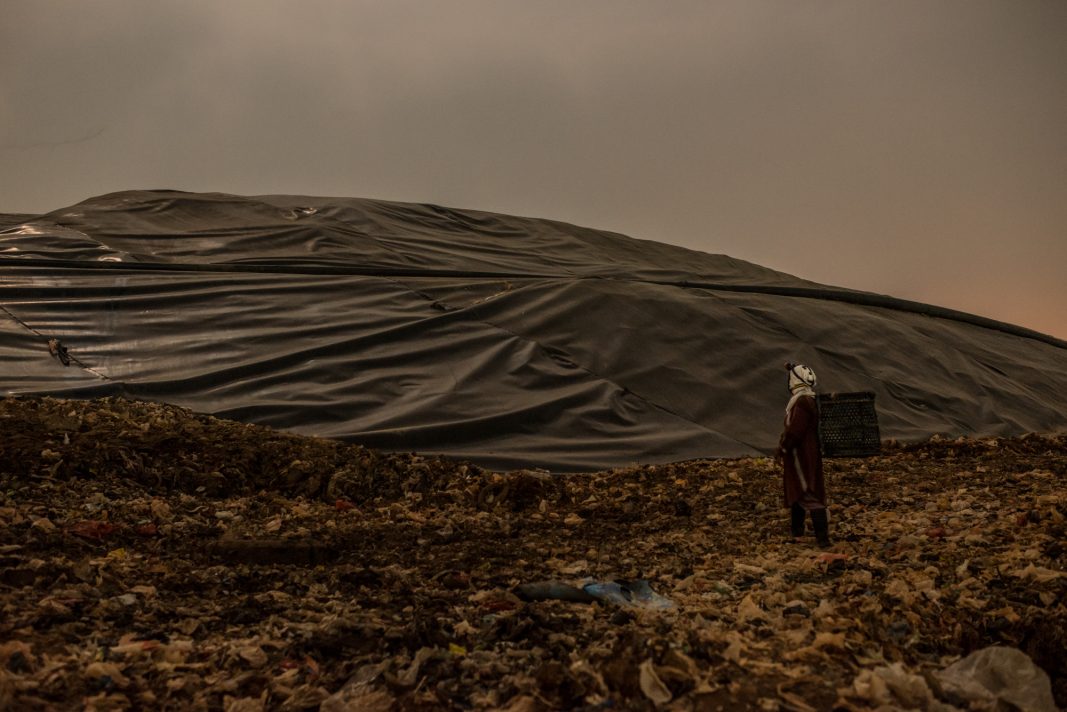
|
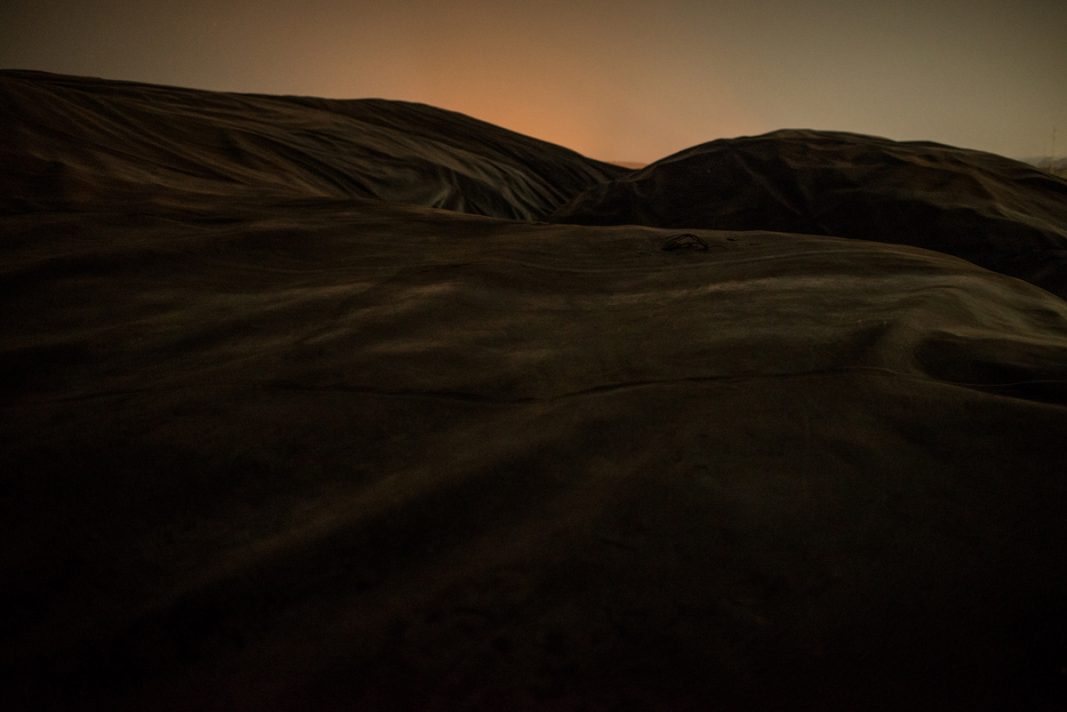
The geomembrane covering a part of Bantar Gebang landfill, which has already reached the maximum waste capacity, looks like an eerie deep black sea in the reddish light coming from machines and scavangers working all night long in a different area of the dumpsite. Bekasi, Indonesia, 10th May 2018
|